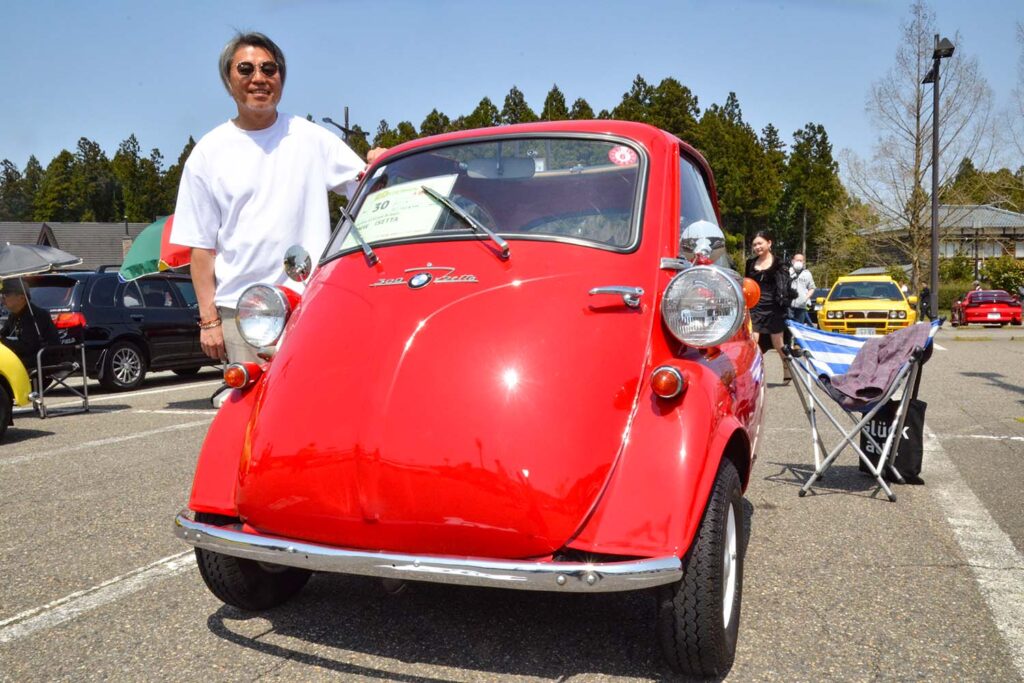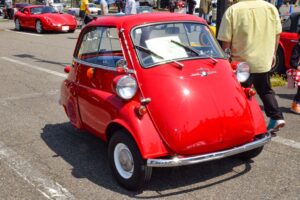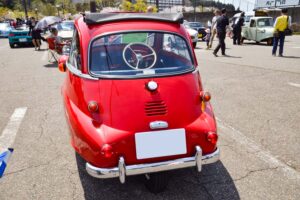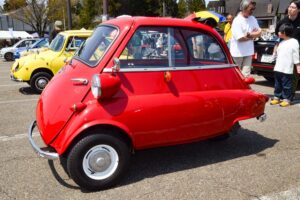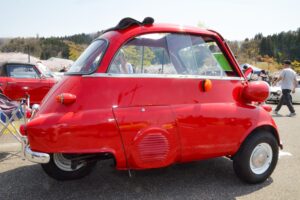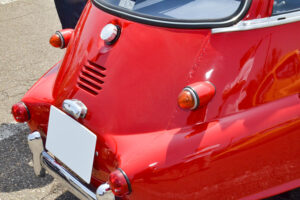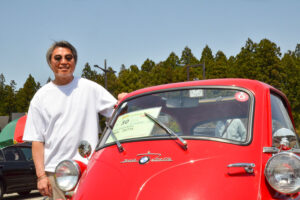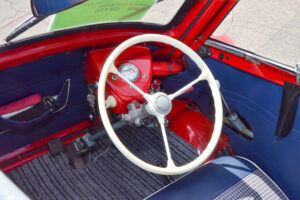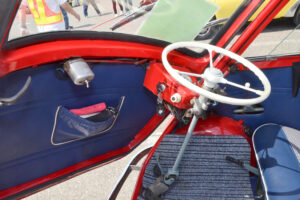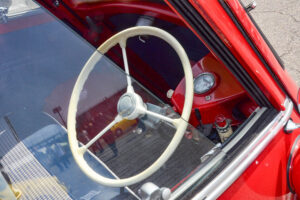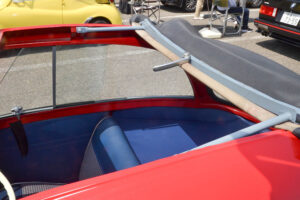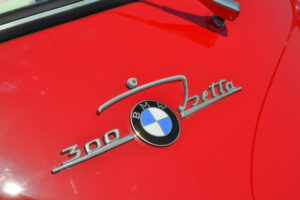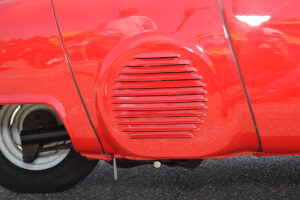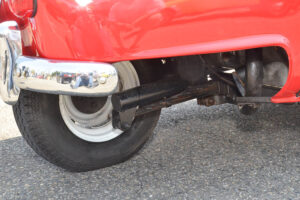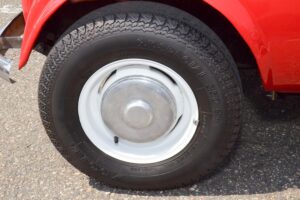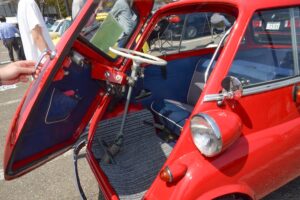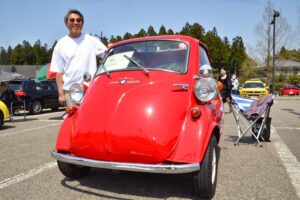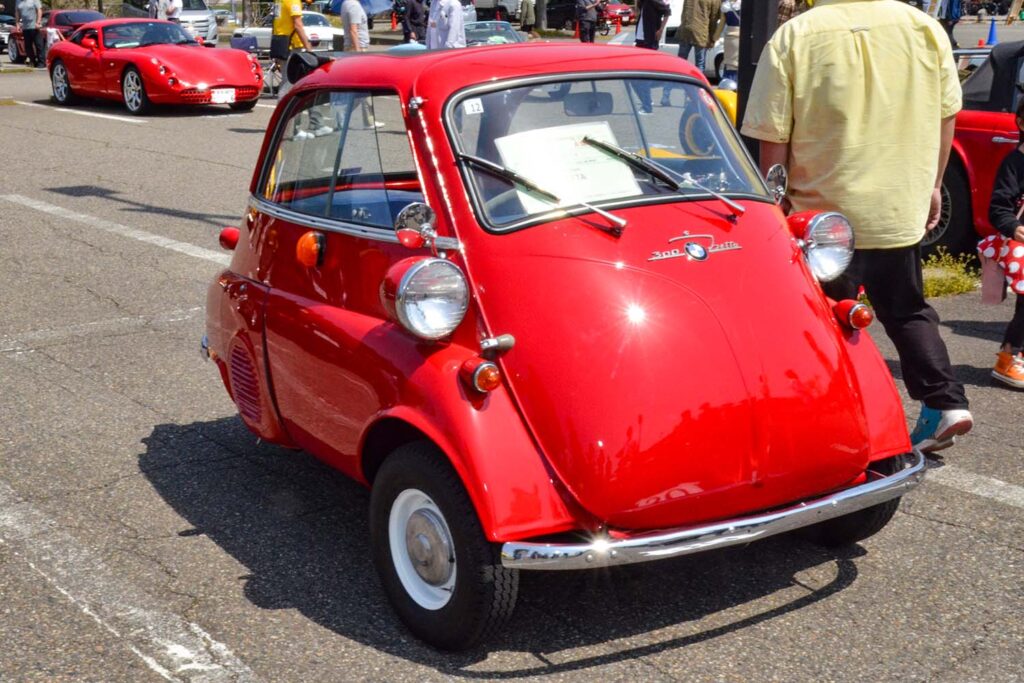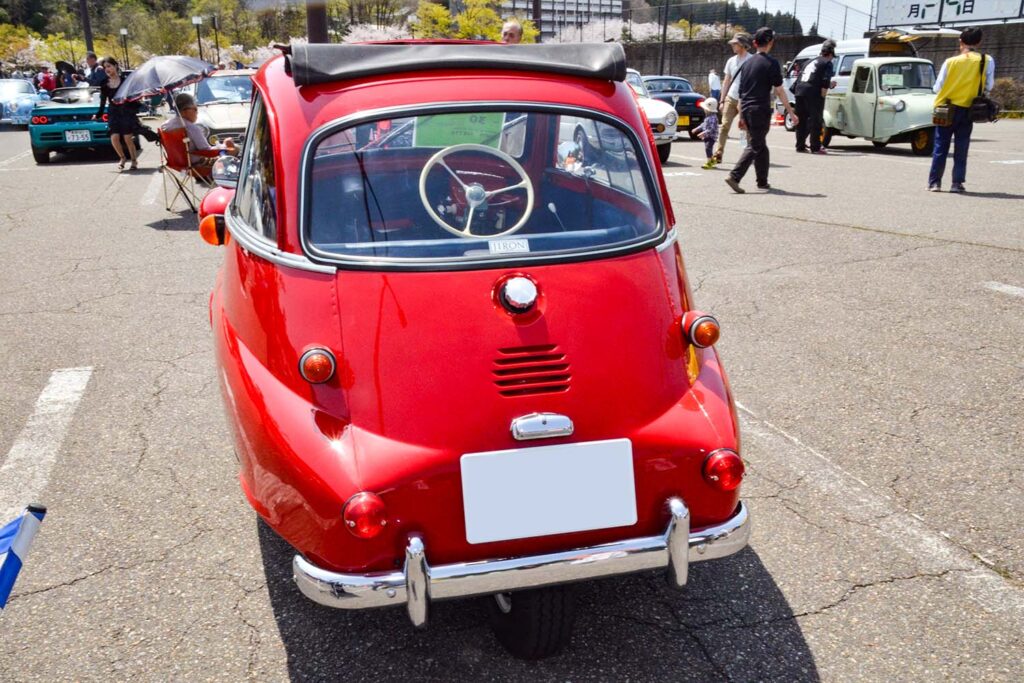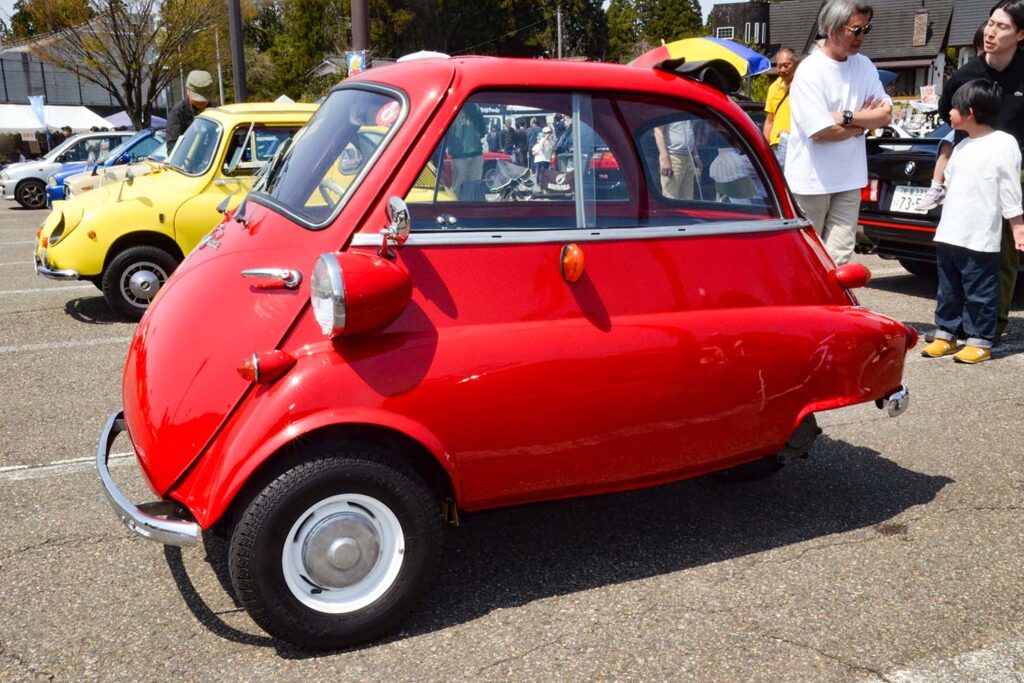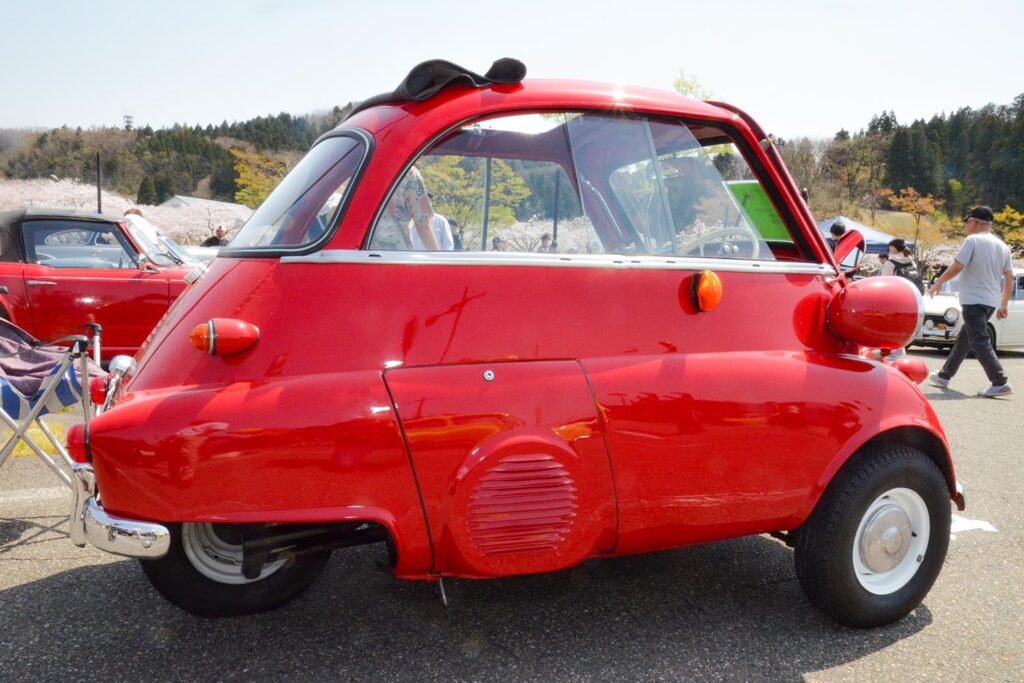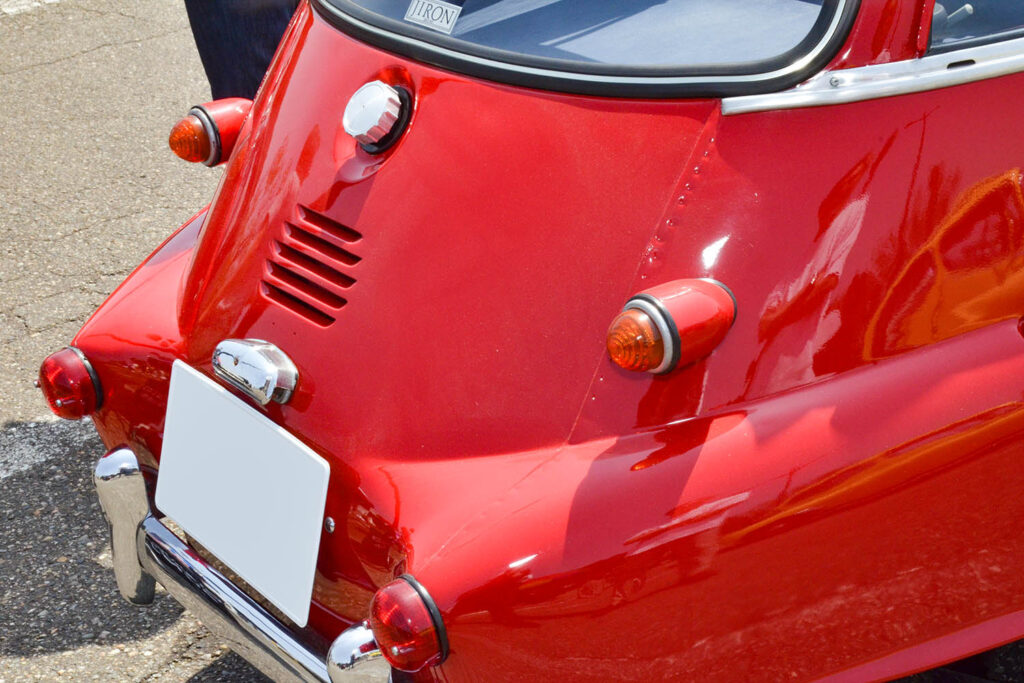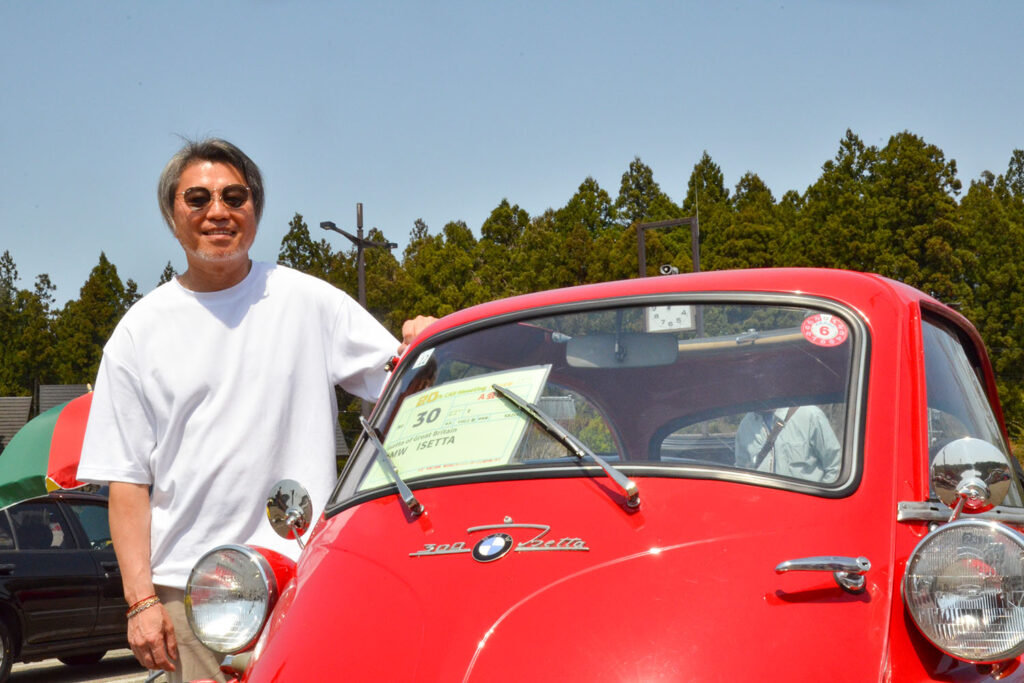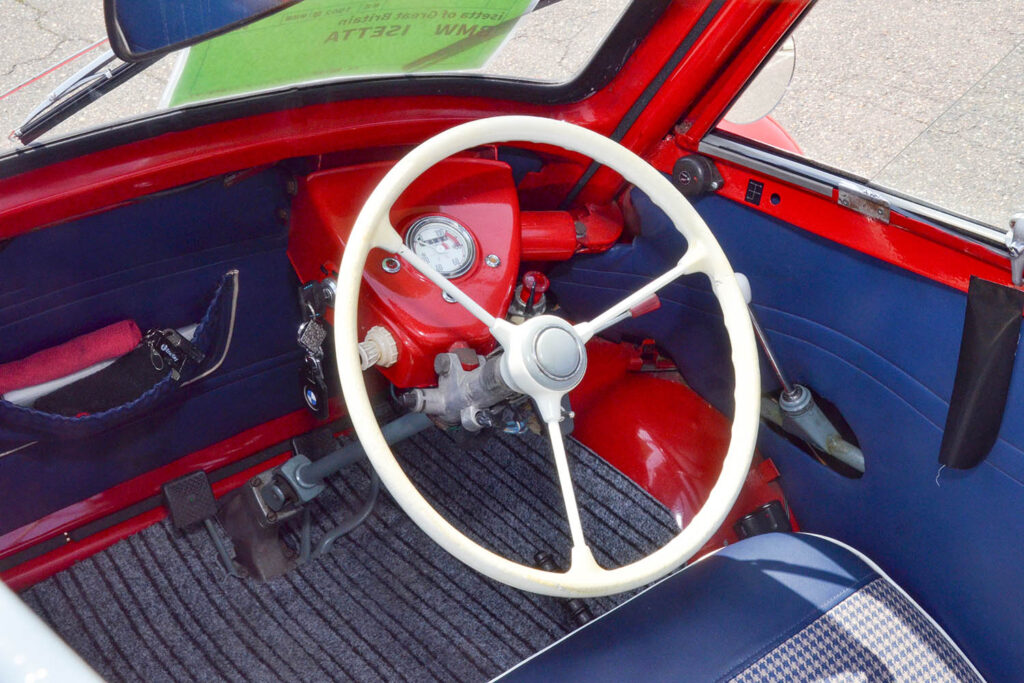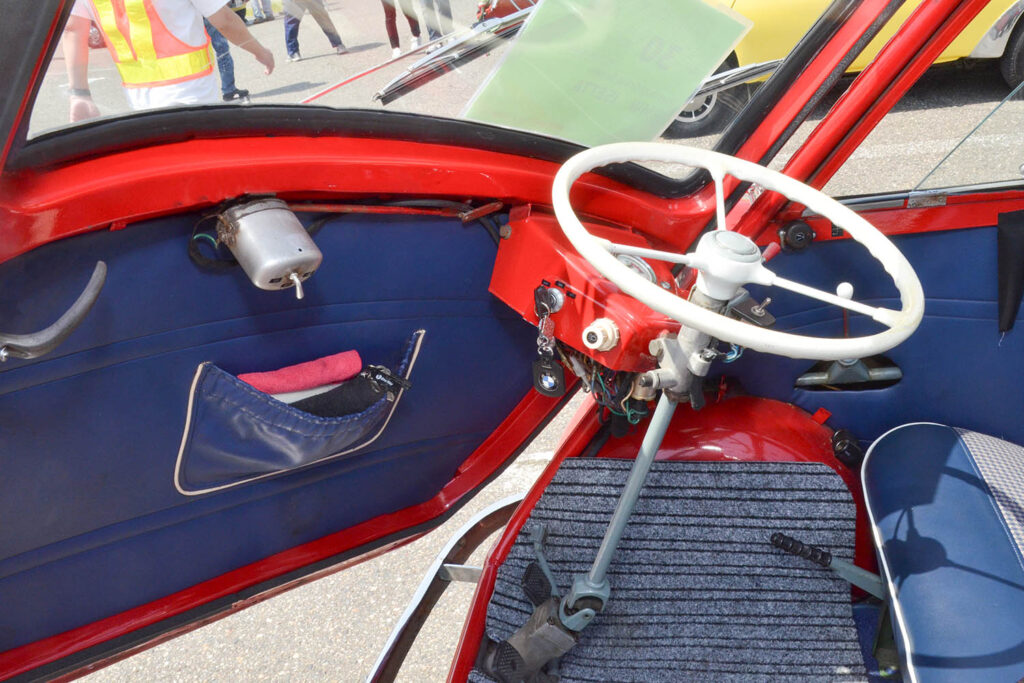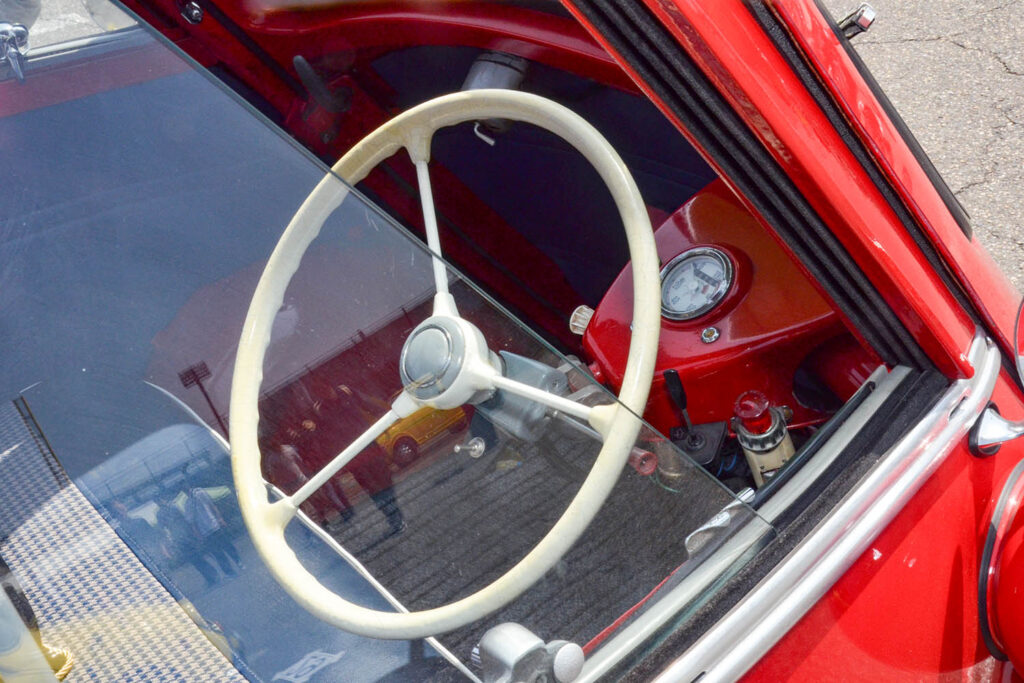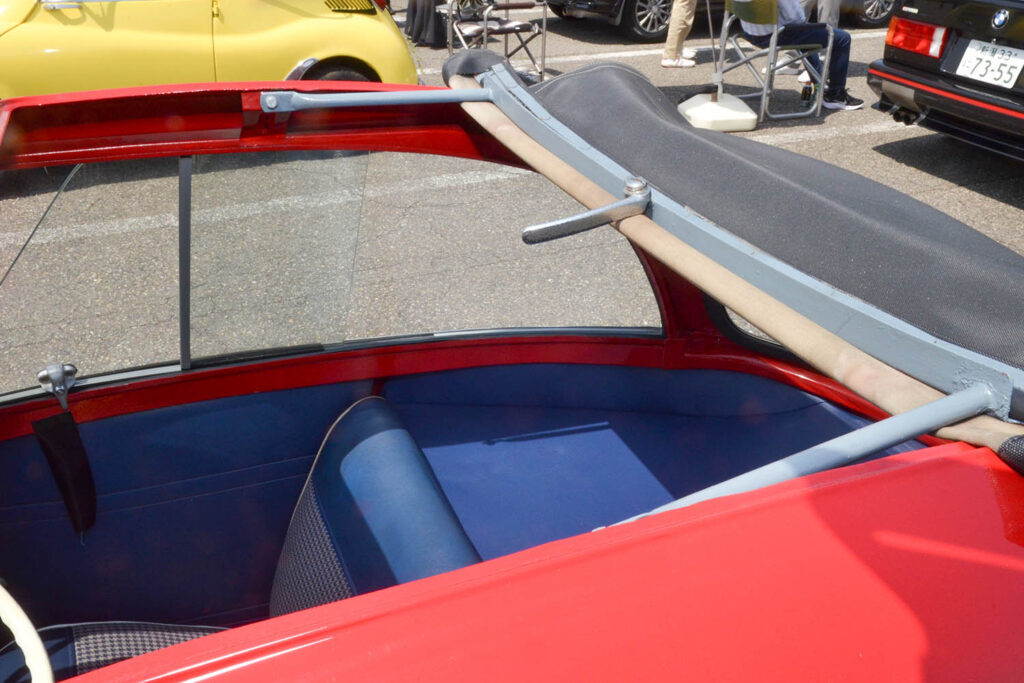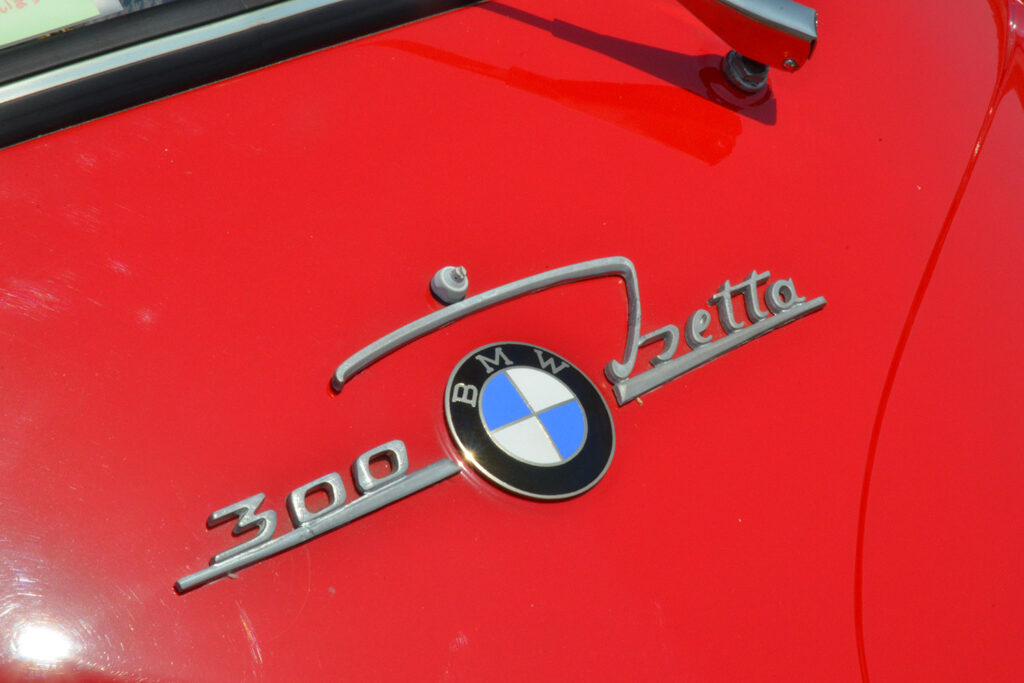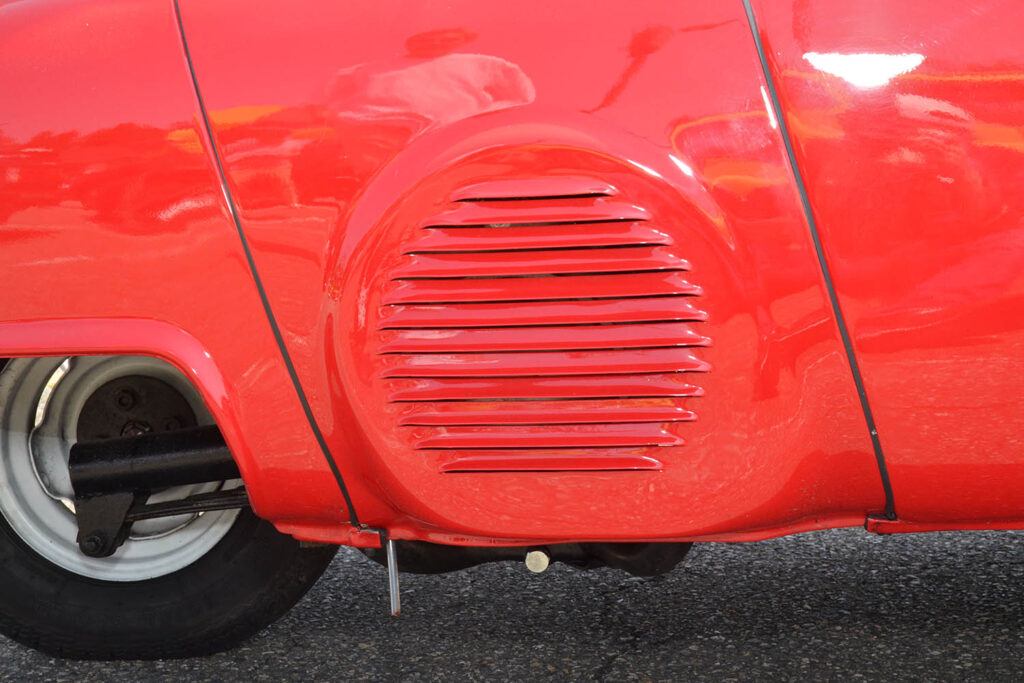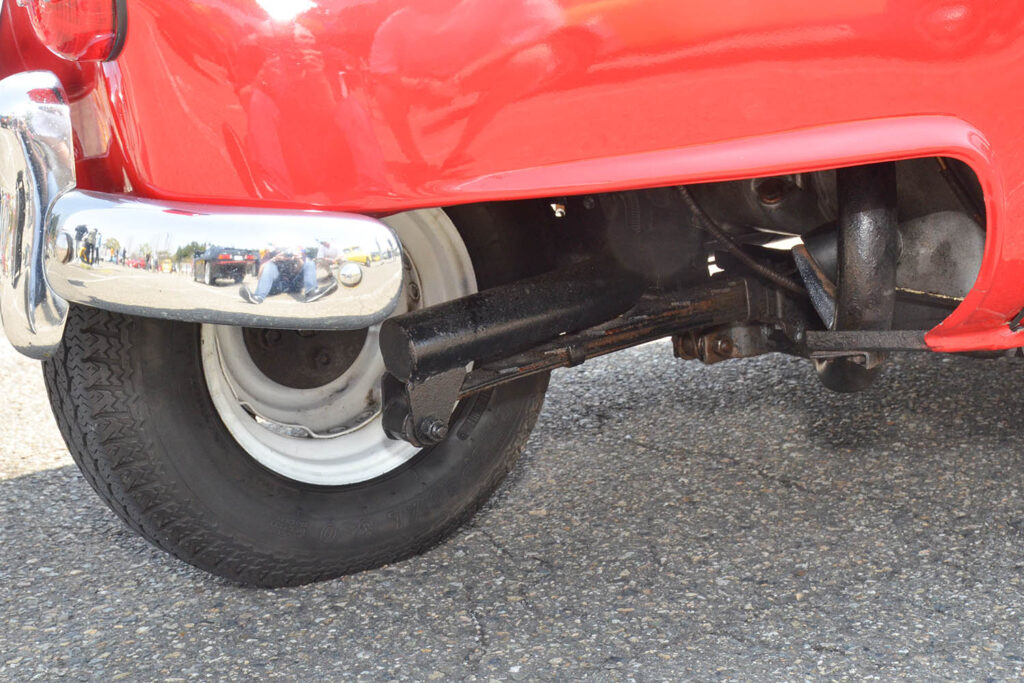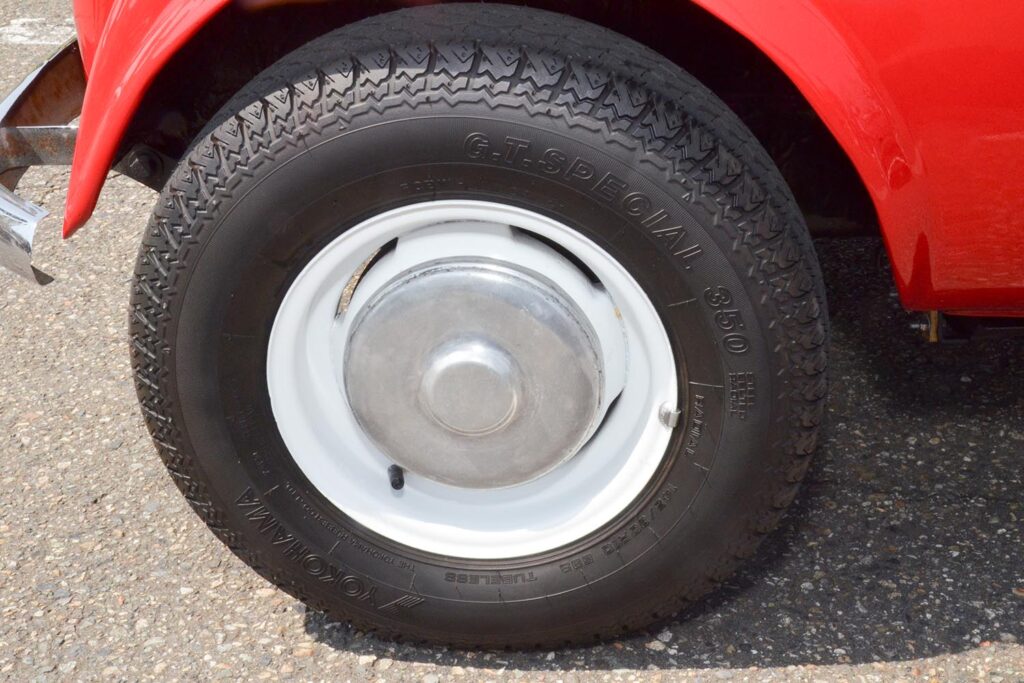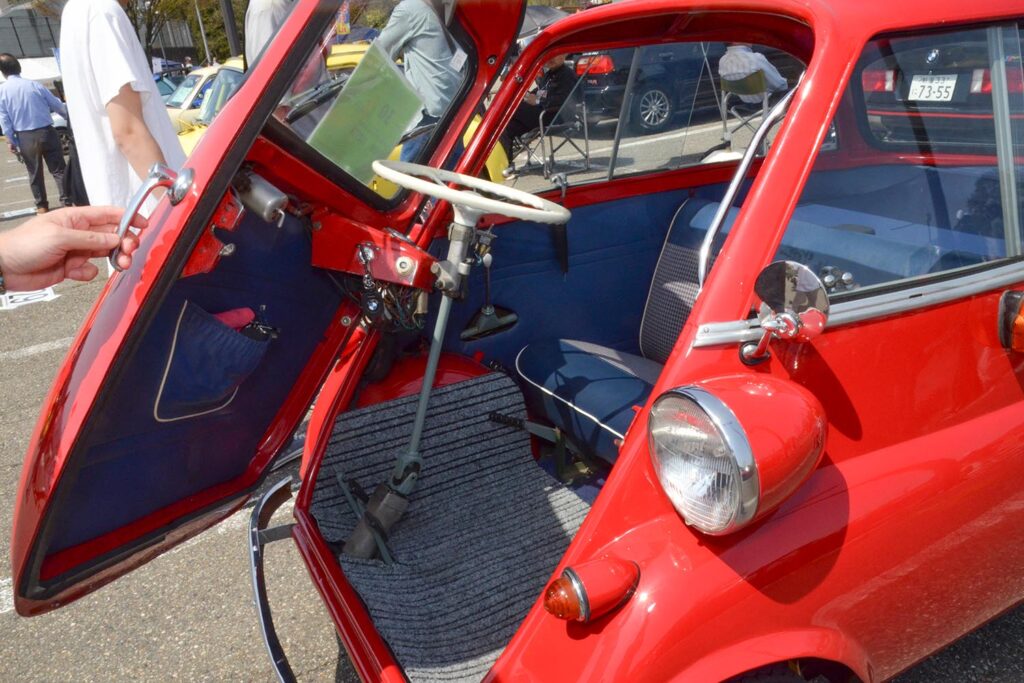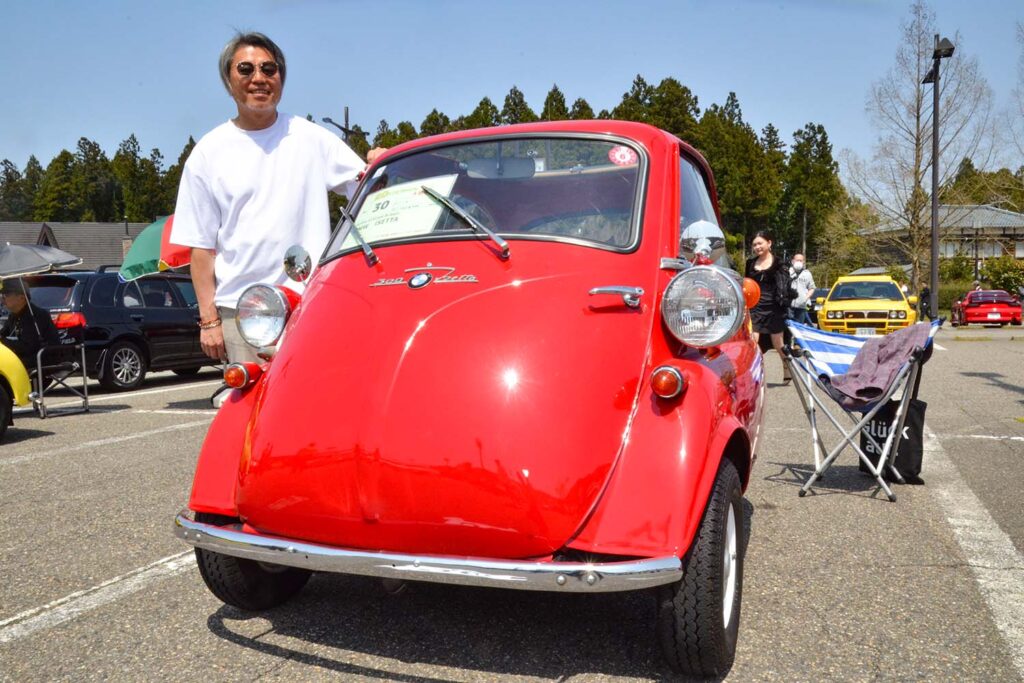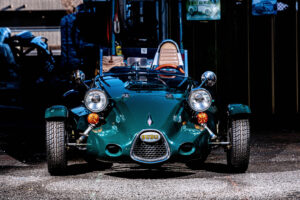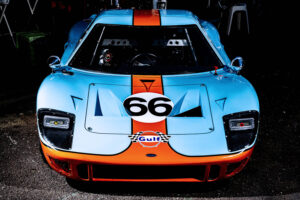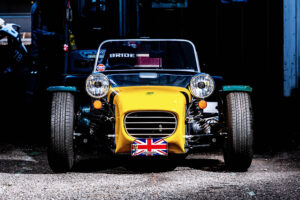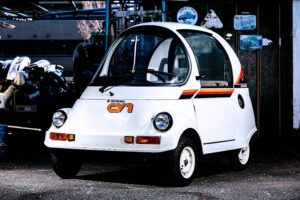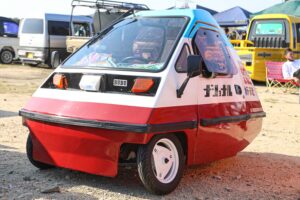The Isetta made in Great Britain
The cities of Tsubame and Sanjo in Niigata Prefecture have developed as a sacred place for the metalworking industry, first as a forge during the Edo period, and since the modern era, utilizing that tradition. Mr. Tomoyuki Kobayashi, who runs a long-established manufacturing company in such an area, was attracted to the BMW Isetta.
The hit model that saved BMW after the war
The BMW Isetta is also known as the hit model that saved BMW from financial difficulties during the chaotic postwar period in Germany, which was defeated in World War II. As you know, this was the original unique minimal transporter developed by the Italian company Iso-Isetta, which was also produced under license in Germany and other countries such as France, Belgium, Spain, and Brazil.
This was the first time this BMW Isetta had participated in this event, and while the regular Isetta has four super-narrow-tread rear wheels, this one was a three-wheel car with only one rear wheel, and the steering wheel was positioned on the right. The direction of the opening and the position of the hinges of the refrigerator-like front doors are also reversed.
Tsubame-Sanjo, where the manufacturing industry has long flourished, and historic cars have something in common
“This is an Isetta made by Isetta of Great Britain. This model was manufactured at the Brighton factory in England and is a 1962 model,”
said Mr. Tomoyuki Kobayashi, the owner, who told us the identity of the car. In the United Kingdom, three-wheeled vehicles are treated as two-wheeled vehicles in the same way as sidecars, and because of tax advantages, many three-wheeled passenger cars have been produced for a long time. The engine itself, located behind the seats, is a single-cylinder OHV 582 cc engine that was converted from a BMW motorcycle and is identical to the German-produced model.
“The BMW Isetta has been on my mind since I was in junior high school, and I had been looking for one for a while, but about two years ago I acquired one that a store in Osaka had imported from England.”
Mr. Kobayashi runs a long-established manufacturing company in his hometown of Sanjo. The cities of Tsubame and Sanjo in Niigata Prefecture, where this event was held, developed as a sacred place for the metalworking industry, first as a blacksmithing center in the Edo period (1603-1868) and then, since the modern era, as a place that utilizes this tradition. Mr. Kobayashi usually displays Isetta as a mascot at the entrance of his company to give young staff and visitors a sense of “old-time manufacturing”.
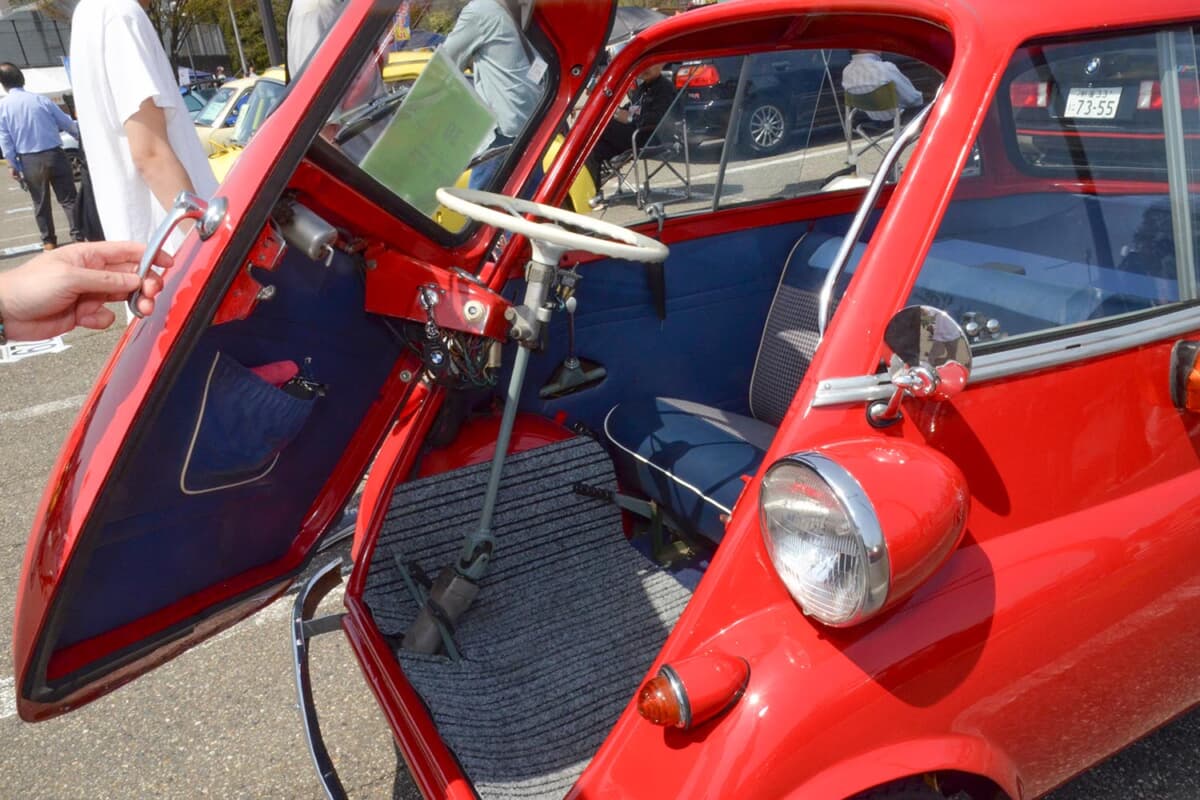
“By displaying a genuine historic car at the entrance of a company in Tsubame-Sanjo, where metalworking and other manufacturing industries have long flourished, we hope to send out some kind of message common to manufacturing,”
says Mr. Kobayashi. Products made by craftsmen who are serious about their work are equally precious, regardless of the field, such as cutlery or cars.





